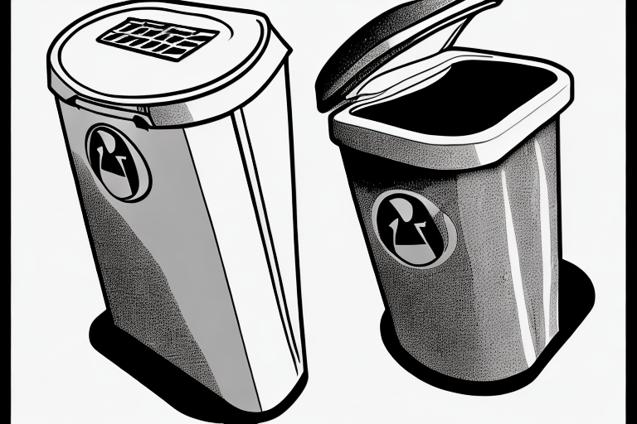
Properly disposing of hazardous waste on your boat is vital to protecting the environment and the health of aquatic life. Learn the best practices for safely and responsibly disposing of hazardous materials while sailing.
How to Properly Dispose of Hazardous Waste On Board
Sailing the open seas with your family is an incredible experience, but it also comes with a great responsibility to protect the environment. One of the most important aspects of this responsibility is the proper disposal of hazardous waste on board your boat. In this article, we will discuss the different types of hazardous waste you may encounter while sailing, the potential dangers they pose, and the best practices for disposing of them safely and responsibly.
Table of Contents
- Understanding Hazardous Waste
- Types of Hazardous Waste on Board
- Proper Disposal Methods
- Preventing Hazardous Waste Generation
- Conclusion
Understanding Hazardous Waste
Hazardous waste is any waste material that poses a threat to human health or the environment. It can be in the form of solids, liquids, or gases, and can be generated from various sources, including household products, industrial processes, and even natural processes. When not properly managed, hazardous waste can contaminate the air, water, and soil, leading to serious environmental and health problems.
As sailors, we have a unique opportunity to witness the beauty of the world’s oceans and the diverse ecosystems they support. However, we also have a responsibility to minimize our impact on these fragile environments by properly managing and disposing of hazardous waste on board our boats.
Types of Hazardous Waste on Board
There are several types of hazardous waste that you may encounter while sailing. Some of the most common include:
1. Used Oil and Fuel
Used oil and fuel are common hazardous wastes generated on boats. They can contaminate water and harm aquatic life if not properly disposed of. Additionally, used oil and fuel can pose a fire hazard on board your boat.
2. Batteries
Batteries, especially lead-acid batteries, contain hazardous materials such as lead and sulfuric acid. When not properly disposed of, these materials can leach into the environment and cause soil and water contamination.
3. Paints and Solvents
Many paints and solvents contain hazardous chemicals that can be harmful to humans and the environment. These chemicals can evaporate into the air, causing air pollution, or can contaminate water and soil if not properly disposed of.
4. Cleaning Products
Some cleaning products contain hazardous chemicals that can be harmful to aquatic life and the environment. It is important to use environmentally friendly cleaning products whenever possible and to dispose of any hazardous waste generated by these products properly.
5. Electronic Waste
Electronic waste, or e-waste, includes items such as old navigation equipment, radios, and other electronic devices. These items can contain hazardous materials, such as lead, mercury, and cadmium, which can be harmful to the environment if not properly disposed of.
Proper Disposal Methods
Now that we have identified some of the most common types of hazardous waste on board, let’s discuss the proper disposal methods for each.
1. Used Oil and Fuel
- Do not dump used oil or fuel overboard or into the bilge. This can lead to water pollution and harm aquatic life.
- Store used oil and fuel in a designated container on board until you can dispose of it properly at a marina or waste disposal facility.
- Use an oil-absorbent pad to clean up any spills or leaks. Dispose of the pad properly at a waste disposal facility.
2. Batteries
- Do not throw batteries overboard or dispose of them in regular trash.
- Store used batteries in a designated container on board until you can dispose of them properly at a marina, waste disposal facility, or recycling center.
- Consider using rechargeable batteries to reduce the amount of hazardous waste generated on board.
3. Paints and Solvents
- Do not dump paints or solvents overboard or into the bilge.
- Store used paints and solvents in a designated container on board until you can dispose of them properly at a marina or waste disposal facility.
- Use water-based paints and solvents whenever possible, as they are less hazardous to the environment.
4. Cleaning Products
- Do not dump cleaning products overboard or into the bilge.
- Use environmentally friendly cleaning products whenever possible.
- Store any hazardous cleaning products in a designated container on board until you can dispose of them properly at a marina or waste disposal facility.
5. Electronic Waste
- Do not throw electronic waste overboard or dispose of it in regular trash.
- Store electronic waste in a designated container on board until you can dispose of it properly at a marina, waste disposal facility, or recycling center.
Preventing Hazardous Waste Generation
In addition to properly disposing of hazardous waste, it is important to take steps to prevent the generation of hazardous waste on board your boat. Some tips for doing this include:
- Use environmentally friendly products whenever possible.
- Maintain your boat’s engine and fuel system to prevent leaks and spills.
- Use rechargeable batteries instead of disposable ones.
- Properly store and handle hazardous materials to prevent spills and leaks.
- Regularly inspect your boat for signs of hazardous waste generation, such as oil leaks or corroded batteries.
Conclusion
Properly disposing of hazardous waste on board your boat is an essential part of being a responsible sailor and protecting the environment. By understanding the types of hazardous waste you may encounter, using proper disposal methods, and taking steps to prevent hazardous waste generation, you can help ensure that our oceans and the ecosystems they support remain healthy and vibrant for generations to come.